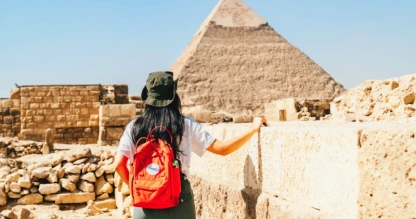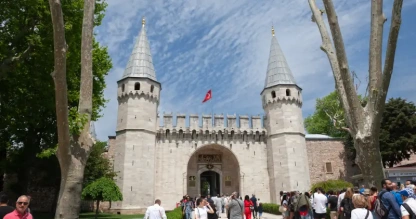
Fener and Balat : Istanbul’s Colorful Heritage
Nestled along the Golden Horn, Fener and Balat are two of Istanbul’s most charming and historically rich neighborhoods. Once home to Jewish, Greek Orthodox, and Armenian communities, these districts reflect the city’s deep cultural diversity. Strolling through their narrow cobblestone streets, you’ll find colorful houses, centuries-old churches, synagogues, and mosques standing side by side.
Today, Fener and Balat blend old-world charm with modern creativity, filled with boutique cafés, art galleries, and vintage shops — making them a must-visit for anyone wanting to experience authentic Istanbul on their Turkey tours. The area's distinctive architecture, religious landmarks, and lively street scenes provide a window into Istanbul's multicultural heritage.
The Cultural Layers of Fener and Balat
Balat and Fener neighborhoods demonstrate how different faiths and cultures created a unique mixture of urban life that continues to fascinate visitors today.
Orthodox, Jewish, and Muslim coexistence
These districts became multicultural after Constantinople fell in 1453. Sultan Mehmet the Conqueror allowed Christian and Jewish communities to freely practice their faiths. The Ottoman's religious tolerance helped minorities keep their cultural identities while they lived among the Muslim majority.
The Greek Orthodox community thrived in Fener after the Sultan encouraged Orthodox people to settle there. Balat became the Jewish quarter in 1492 when the Sultan welcomed Sephardic Jews who fled from Spanish Inquisition's persecution. He sent his fleet to Spain to rescue them. Armenian communities also made these neighborhoods their home, which created a true melting pot of cultures and traditions.

Religious landmarks and their stories
The Ecumenical Patriarchate of Constantinople in Fener acts as the spiritual center for more than 250 million Orthodox Christians worldwide. The Church of St. George stands next to it with its beautiful icons, relics, and ornate decor.
Balat's most notable landmarks include:
- The Church of St. Mary of the Mongols remains the only Byzantine church in Istanbul that was never turned into a mosque after 1453
- The Bulgarian St. Stephen Church (Iron Church) features a unique prefabricated cast iron structure built in Vienna in 1896 and assembled in Istanbul in 1898
- The Ahrida Synagogue, which dates back to the 15th century, shows off its ship-shaped design that symbolizes the wandering Jew
Architectural diversity and symbolism
A walk through these neighborhoods reveals stunning architectural variety. The red-brick Phanar Greek Orthodox College, 569 years old and rebuilt between 1881-1883, dominates the area with its castle-like design that reminds visitors of Harry Potter.
Ottoman wooden houses painted in bright yellows, greens, blues, and pinks line the steep hills. These colorful structures, many over 100 years old, feature detailed elements like carved balconies and decorative window frames that each tell their own story.
The architecture means more than just buildings. It represents the peaceful coexistence that defined Ottoman Istanbul, where mosques, churches, and synagogues stand together as proof of religious harmony.

Exploring the Streets: What to See and Do
The labyrinthine streets of Fener and Balat give you one of Istanbul's most authentic experiences, away from the city's mainstream attractions. These neighborhoods reward curious travelers during their tours with vibrant colors, rich textures and a genuine peek into local life.
Wandering the cobblestone alleys
Steep, winding cobblestone streets create the perfect setting to explore without rushing. The uneven pathways rise and fall like little hills and might test your balance, but they lead to amazing sights. You'll see locals chatting on doorsteps, kids playing football with makeshift balls, and laundry strung across narrow alleys - creating scenes that time hasn't touched. Getting lost here actually helps you experience these neighborhoods naturally.
Photo spots: colorful houses and umbrella street
The area's most photographed attraction comes from its multicolored Ottoman houses. These vibrant dwellings, some 200 years old, create spectacular rainbow rows that photographers love. Notable spots include:
- Kiremit Street - The famous rainbow row of houses that spread across social media
- Merdivenli Ramp (Corbaci Cesmesi) - A restored area with colorful stairs that's now a trendy photo spot
- Dimitrie Cantemir Museum Café - The neighborhood's umbrella street, though you'll need to buy something to take photos

Visiting antique shops and local markets
Balat's streets, especially Vodina Street and Leblebiciler Street, house many antique shops and vintage stores. The Fener Antique Auction runs from 3 pm to 8 pm daily and attracts visitors with affordable treasures. These shops stock everything from religious artifacts to vintage furniture and clothing.
Hidden gems off the main path
Beyond Instagram hotspots lies the historic Agora Tavern, a 130-year-old establishment still run by the same family. The smaller backstreets show you genuine local life where elderly men play backgammon outside teahouses and bakers pull fresh loaves from wood-fired ovens.

Practical Tips for First-Time Visitors
The right timing and preparation will make your visit to Fener and Balat feel authentic. Explore these historic neighborhoods like a local with our Turkey tour packages.
Best time of day to visit
Fener and Balat are at their best early in the morning, especially on weekdays when the streets stay quiet. You'll find fewer crowds and better photo opportunities before noon from late spring to early fall. Winter and early spring see far fewer visitors, so you can be more flexible with your schedule. The weekends get busy quickly, which might not work if you want a peaceful walk around.
What to wear and bring
You'll need good walking shoes because the steep hills and cobblestone streets will test your feet. The neighborhoods sit on different levels, so proper footwear is a must.
Modest clothing works best, especially when you have plans to visit religious sites. Women should pack loose clothes that cover shoulders and knees, while men should skip shorts in religious areas.
Make sure to bring:
- A small pack of tissues (public toilets don't always provide paper)
- An Istanbulkart if you want to use public transportation
- Local currency (many small shops take only cash)
Safety and etiquette tips
Fener and Balat are safe places, particularly in daylight. Watch out in less-developed areas on the edges, especially after dark. A simple "Merhaba" (hello) when you walk into shops shows respect, and that cup of tea they offer is more about being friendly than making a sale. Mosque visits call for head scarves for women, and everyone should take off their shoes before stepping inside.

Local Life and Food Culture
The soul of Balat and Fener shines through its vibrant food scene. These neighborhoods blend centuries of culinary traditions that tell stories of diverse cultures coming together.
Where locals eat and drink
Local families skip the tourist spots and head straight to their favorite family-run eateries. Agora Meyhanesi brings together Turkmen, Armenian, Greek Orthodox, and chefs who create an amazing multi-ethnic dining experience. You'll find some of Istanbul's best kofte at Canak Mangalda Kofte. The clay pot kebab at Old Balat Cafe has earned local praise, and Barba Vasilis Tavern delights guests with homemade stuffed artichoke and octopus.

Traditional dishes to try
Forno Balat serves up must-try lahmacun made with fresh local ingredients. The Turkish breakfast spread at Velvet Cafe starts your day right, and Cafe Naftalin K welcomes both humans and cats with tasty vegetarian meatballs. The area's coffee culture adds its own twist - you can sip Syriac coffee with cardamom or enjoy Mardin coffee that comes with sugar-coated almonds at many local spots.
Cafes with a view of the Golden Horn
Balatkapı Cafe ve Restaurant lets you take in sweeping views of the historic area and waterfront. The fish restaurants housed in restored buildings along the Golden Horn serve fresh seafood with beautiful water views.

Most tourists miss out on Balat and Fener, but these neighborhoods give you a real taste of Istanbul's mixed heritage. They show what happens when different communities come together to create something special. If you want to see the real Istanbul beyond the tourist spots, these historic streets offer everything - rich history, lively neighborhoods, and genuine culture that lives on today.
Discover the best of Turkey on our Turkey tours and Middle East trips!
FAQS
1. Are Fener and Balat the same?
Not exactly, Fener and Balat are neighboring districts along the Golden Horn in Istanbul. Fener was historically home to the Greek Orthodox community, while Balat was known for its Jewish heritage. Today, they’re often visited together because of their close location and shared old-town charm.
2. Where are Fener and Balat?
Fener and Balat are located on the European side of Istanbul, just west of the Golden Horn, between Ayvansaray and Unkapanı.
3. Is it worth going to Fener and Balat?
Absolutely! These districts offer a unique glimpse into Istanbul’s multicultural past. With colorful houses, narrow cobbled streets, ancient churches, and cozy cafés.
4. What to see in Balat and Fener?
There’s plenty to explore — visit the Greek Orthodox Patriarchate, the Church of St. George, Ahrida Synagogue, and Phanar Greek Orthodox College. Don’t miss Balat’s colorful houses, street art, and local antique shops for a true taste of the neighborhood’s charm.
5. What are the best times to visit Fener and Balat?
The best time to visit Balat and Fener is during spring (April–June) or autumn (September–October) when the weather is pleasant for walking and photography. Early mornings or late afternoons are ideal to enjoy the soft light and quieter streets.














